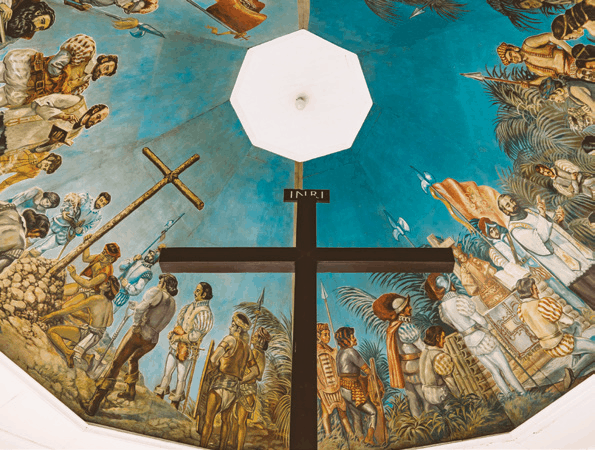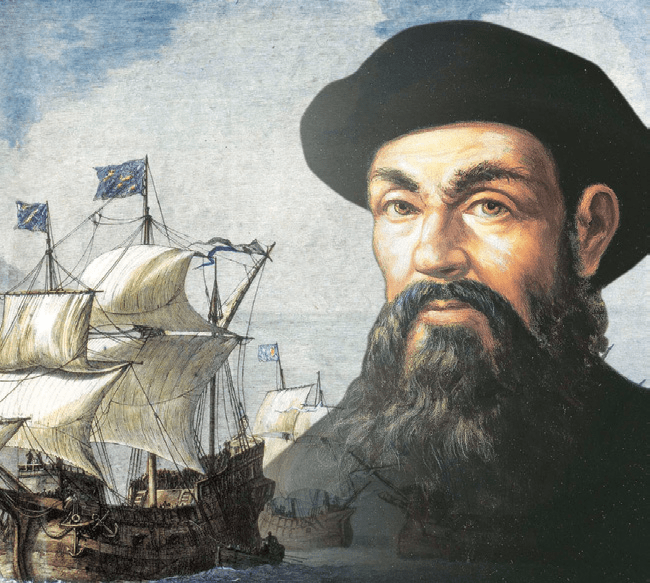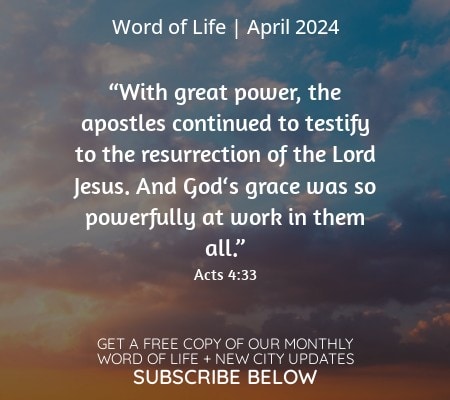We stand before the grand horizon,
five hundred years of faith, grateful today.
We bear the gift of mission,
totally yours, we give ourselves,
faithfully yours until the end,
to your mission, Lord: we give our Yes!
(“We Give Our Yes” by Fr. Carlo Magno Marcelo)

It was the year 1521 when the Spaniards first arrived in the Philippines. Portuguese explorer Ferdinand Magellan and his crew were on an expedition sponsored by the then 18-year-old King Charles I of Spain. Magellan assured the king that the voyage would bring a great advantage to Spain as the crew would explore another route to the Spice Islands (the Moluccas in present-day Indonesia). In the course of the expedition that began in 1519, Magellan and his men had stopovers before arriving in the archipelago that would later be called “Filipinas” after Prince Philip II. But it was only here where Magellan, as some writers note, was inspired by religious zeal to evangelize the people. He befriended the locals, and on Easter Sunday, March 31, 1521, the first Mass in the archipelago was celebrated on Limasawa island, presided by Fr. Pedro de Valderrama, OSA, the chaplain of the fleet. On the same day, Magellan ordered his men to plant a large wooden cross on top of a hill overlooking the sea. Two native leaders joined them, making them the first inhabitants of our islands to encounter Christianity. Magellan’s crew would continue to sail towards Cebu where, upon their arrival, they planted another cross (now known as Magellan’s Cross). In the days that followed, he was able to persuade several locals, including their leaders, to be baptized. To mark the occasion, he gave them three gifts: the image of the Child Jesus (the Santo Niño de Cebu), an Ecce Homo (ivory bust of the suffering Jesus), and an image of the Blessed Virgin Mary (the Virgen dela Cotta de Cebu). However, after a few days, Magellan himself died in the Battle of Mactan, and the rest is history.
“Why celebrate 500 years of Christianity in the Philippines? Was not Christianity a mere tool for colonial rule?” Catholic Bishops’ Conference of the Philippines (CBCP) Vice President and Kalookan Bishop Pablo Virgilio David provides this answer:
“The same Christian faith that the conquistadores tried to use in order to pursue their colonial purposes in our country also inspired our revolutionaries around three and a half centuries later to dream of freedom and democracy. It is the same Christian faith that eventually motivated them to defend the basic human dignity of the Indios [natives] and desire to put an end to tyranny and colonial rule. (…)

“Our own ancestors were intelligent enough to accept what was good and reject what was evil in what the Spaniards had brought with them when they came to our land. They also eventually learned to distinguish between the missionaries who had totally allied themselves with the colonial politics of the conquistadores and those who were critical of it, those who had the courage to defend the rights of the natives against the abuses and cruelties of the colonial masters.
“The mere fact that we eventually repudiated colonial rule but continued to embrace the Christian faith even after we won the revolution could only mean that the natives did not equate Christianity with colonialism. At some point, the faith that they had embraced was no longer alien to them. It had succeeded in taking root on the fertile ground of our innate spirituality as a people.
“Let us, therefore, make it clear: what we will celebrate in 2021 is not colonialism but the Christian faith that the natives of these islands welcomed as a gift, albeit from people who were not necessarily motivated by the purest of motives. God can indeed write straight even with the most crooked lines.”[1]
Five hundred years after, we see how the seed of the Christian faith planted in 1521 has developed and continues to flourish to this day. Perhaps, the previous sentence would make you think of the overwhelming majority of the Filipino population who identify themselves as Christians. On the other hand, beyond numbers, let us look deeper. Filipino religious traditions such as the Santacruzan, Flores de Mayo, Simbang Gabi, and Pabasa manifest the Christian aspect of our Filipino culture. From the 16th-century Doctrina Christiana, we now have our inculturated Catechism for Filipino Catholics, which was approved and published in the 1990s. Many Filipinos have a strong devotion to Jesus (just look at how the religious feasts of the Santo Niño and the Black Nazarene are celebrated in different parts of the country) and to His mother, Mary (as we have identified ourselves as Pueblo Amante de Maria – “A People Devoted to Mary”), and these devotions have been passed down for generations.
Parishes play a frontline role in the evangelization of the people and in sustaining the faith life of the community, which includes administering the sacraments. These are the centers where Basic Ecclesial Communities[2] (BECs) are animated, and where Block Rosaries[3] are conducted. The same goes for Catholic educational institutions that have gone beyond including Christian Living in the curriculum. For example, they celebrate the Mass of the Holy Spirit at the beginning of the school year as well as First Friday Masses, assist their students for their First Holy Communion and Confirmation, set up a Campus Ministry, and host annual recollections and retreats. Various lay movements and organizations, of foreign origin or homegrown, continue to help their members offer authentic witness to their faith through their respective spiritualities.
Two of our countrymen (Lorenzo Ruiz and Pedro Calungsod), both martyred for their faith, have been declared saints; several Filipinos are already in the process of being recognized by the Church for their heroic witness to the faith. We have also offered countless men of the cloth in the service of the Church outside the Philippines. Among these homegrown missionaries are Cardinal Tagle (now cardinal-bishop and serving as Prefect of the Congregation for the Evangelization of Peoples and as President of Caritas Internationalis), and three other Filipino prelates who currently serve as Apostolic Nuncios to Australia, Tanzania, and Spain (not counting the now-retired Nuncio Emeritus to Korea and Mongolia).
Should we be content already? While having lunch during the meeting of Asian bishop-friends of the Focolare Movement in Tagaytay a few years back, then Apostolic Nuncio to the Philippines and now Permanent Observer of the Holy See to the United Nations Archbishop Gabriele Giordano Caccia, shared with us a conversation he had had with a Filipino bishop during one of his visits. The bishop was telling him of the vast number of Catholics in the Philippines. However, the Nuncio gave a word of caution. He said that the Church in the Philippines should not be complacent and fall into mediocrity. As an example, he mentioned how some European countries, known for their deep Catholicism in the past, saw the decline of the Catholic Church in their respective lands in recent years.
We have to admit that, although we see the Christian faith alive in millions of Filipinos, much remains to be desired. In truth, we cannot continue to be ”Katolikong sarado” or a Catholic believer with a closed mindset, not open to discovering, knowing, and practicing his or her faith. In fact, if there is anything that should be our takeaway from this celebration, it’s that we have to review how much we have allowed the Gospel of Christ to influence and transform our lives. It is imperative that we first evangelize ourselves before we can evangelize others. Only in this way can the Christian faith in our country continue to spread and the faith of our people mature even more. In this year dedicated to mission, we are called to look inward and outward, not just being mere recipients of the gift of faith but also as enthusiastic missionary disciples of Jesus. As our bishops put it:
“The Christian faith arrived and prospered in our land through the dedication and heroic sacrifices of thousands of men and women missionaries from various parts of the world. They treasured the gift of faith they had received and desired to share this gift with others. As the theme chosen by the CBCP for this fifth centennial notes: all Christians are ‘gifted to give.’ This ‘giftedness’ motivated zealous missionaries over the centuries; it must also enflame the hearts of all of us today to engage in mission here at home and in other countries (missio ad gentes). Indeed, this is part of Jesus’ mission mandate to his disciples: ‘What you have received as a gift, give as a gift’ (Mt 10:8). We pray for a missionary renewal of our Church—both at home (ad intra) and beyond our borders (ad extra) during our celebration of the 500 years—and into the future!”[4]
Let us take advantage of this year-long celebration to reflect on how we are truly responding to the demands of the Gospel in our time. This jubilee is our kairos moment, the opportune time for action, conversion, and transformation—a change of life. Even as we are faced with various crises in life, God is with us, assisting us, helping us to see and understand this time as a moment of grace. So we renew our personal commitment to Him and rekindle our missionary zeal, making more concrete and radical steps in our journey together with others as we contribute more and more to the realization of God’s kingdom among us.
Giancarlo “Gio” Francisco
[1] P.V. David, “Why celebrate 500 years of Christianity in the Philippines? Was not Christianity a mere tool for colonial rule?” CBCP News, September 7, 2019.
[2] Small communities of Christians, usually of families who gather around the Word of God and the Eucharist (Second Plenary Council of the Philippines, 138).
[3] A devotion wherein a statue of the Blessed Virgin Mary visits the home of a family that prays the rosary for nine days.
[4] Catholic Bishops’ Conference of the Philippines, Becoming Jesus’ Missionary Disciples. Pastoral Letter for the 2021 Year of Missio Ad Gentes, CBCP News, November 29, 2020.




